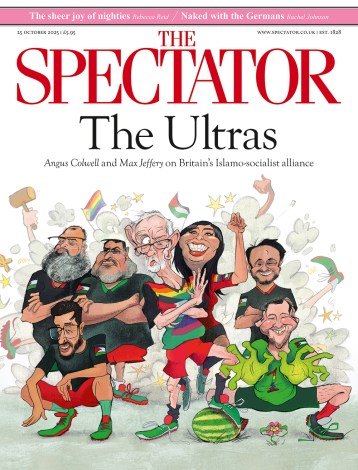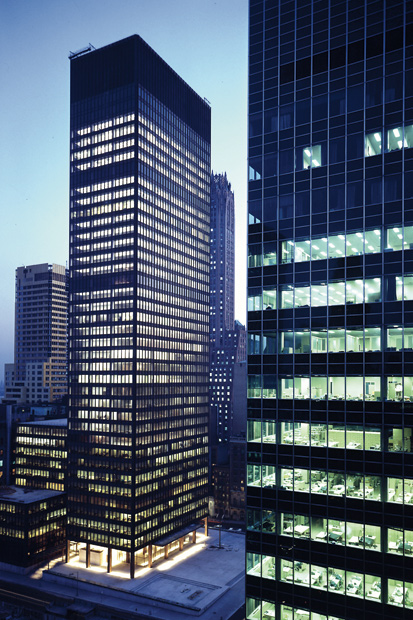Modern Architecture, capitalised thus, is now securely and uncontroversially compartmentalised into art history, its bombast muted, its hard-edge revolutions blurred by debased familiarity. You have been to Catford? You have seen a heroic vision compromised.
Modern Architecture is no more threatening than abstract art, although the Swiss-French Le Corbusier retains a heady whiff of the opprobrium which attaches to bogeymen. His rival in stature was the German-American, Ludwig Mies van der Rohe, a very different designer. With Corb we think of head-butting bravura concrete. With Mies, as he is always known, we think of magnificently refined steel and glass: the beautiful architectural full stop of Hegel’s history.
Mies was the last director of the radically horizontal, but left-leaning, Bauhaus, the design school which the Nazis closed down in 1933. He then went to the United States and reinvented himself as the architect of corporate America. To some, this was a betrayal, but Mies was not much detained by political doctrine. He was a builder: before its closure, he had no difficulty arguing with the Berlin gauleiters that the Bauhaus was authentically German, an argument he lost.
His background was in artisan crafts and the early buildings were influenced by the peerless Prussian classicist, Karl-Friedrich Schinkel. Mies was an autodidact. One of his favourite books was A.N. Whitehead’s Science and the Modern World, but he was not a systematic intellectual. Yet he became a great aphorist. ‘Less is more’ and ‘God is in the details’ will last as long as his equally precise buildings. In these aphorisms people find the influence of St Thomas Aquinas. A strange combination of craft discipline and beatific vision mixed with an infatuation for industrial materials gave us the heroic glass-walled skyscraper, an architectural type he pioneered and perfected.
Of Mies’s many buildings, Chicago’s Lake Shore Drive Apartments and New York’s Seagram Building are the most familiar from books and magazines. Significantly, the great photographs of them — by Ezra Stoller and Hedrich-Blessing — were taken in the 1950s and 1960s in black and white. The monochrome images emphasise a divine stature, even as they distort the reality. Nowadays, there’s more of a taste among photographers for catching subtleties of colour and light in Mies’s architecture. In photos, the Seagram Building always looks uncompromisingly black, but those Park Avenue mullions are in fact a rich rusty-bronze.
What people admire about Mies is the fanatical perfectionism, the total refusal of decoration, the belief that messianic attention to proportion and finishes can create enduring beauty. One of his own mentors was Heinrch Tessenow, who complicatedly said, ‘The best is always simple, but the simple is not always best.’ Indeed, there are many complexities here. That ‘van’, for instance, was pure affectation.
So far from being unarguably absolute, Mies’s work is full of nearly whimsical contradictions. He denounced formalism in 1923, then made a career of it. His buildings define the Machine Age aesthetic, but were only made possible by the fastidious handicraft of toiling manual labourers. His famous ‘Barcelona’ chair was designed not for a proletarian butt, but for the royal fundament of the King of Spain.
Instead of being the necessary expression of engineering logic, the I-section mullions on the Seagram Building are much deeper than they actually need to be structurally: they are designed to look pleasing thus. And as for the Zeitgeist, that mysterious and errant force which directed modernists, just look at the contemporary curvaceous Chevrolets and Packards parked on Mies’s Illinois Institute of Technology campus. Clearly, the Zeitgeist addressed car designers and building designers in a different language.
The sublime physical quality and awesome, transcendant beauty of Mies’s buildings cannot be argued — at least not by anybody who has experienced them; but the standard criticism is that his hard-earned design language was easily traduced. Nikolaus Pevsner, for example, described a trilogy of his many maladroit followers as ‘Three Blind Mies’. And when I was very young, I visited Mies’s student Philip Johnson, lording it in a suite in the Seagram Building. Johnson, who, as readers of William Shirer’s Rise and Fall of the Third Reich know, had also had his Nazi dalliance, told me: ‘The thing about Mies, son, is that he’s easy to copy.’
But actually, no. Mies never built anything in this country, although Peter — now Lord — Palumbo spent a noble 25 years trying to get his Mansion House Square project realised. Too many bigots and time-servers were against it, although we can now all see that a Mies building in the City of London might have established a stimulating standard of excellence in the world’s most competitive (and debauched) architectural laboratory.
There have been many books about Mies, but this new one, by the late Professor of Architecture at the University of Pennsylvania, is the most complete and it immediately becomes the standard, and suitably monumental, work. Mies once said ‘I don’t want to be interesting, I want to be good.’ This book is both.






Comments